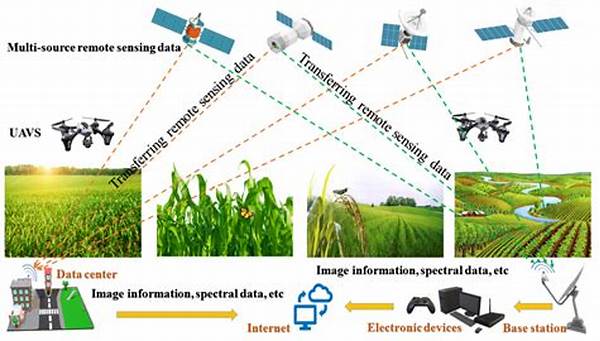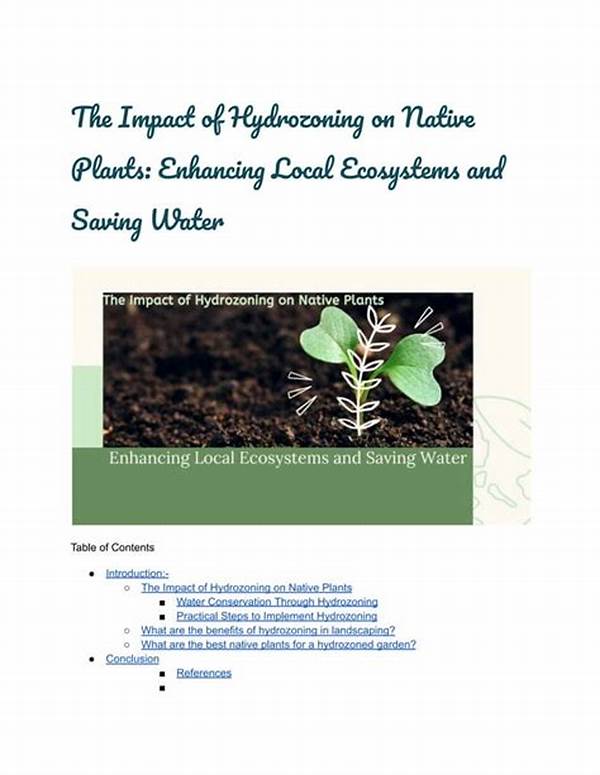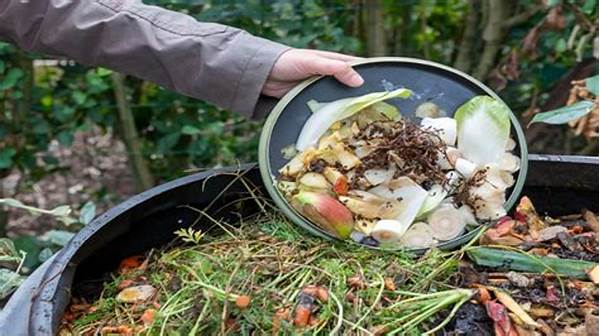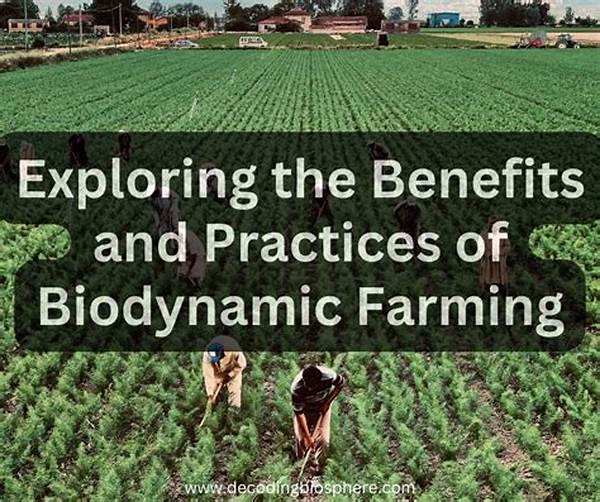In today’s rapidly evolving world, the agricultural sector is under immense pressure to increase productivity while minimizing environmental impact. This is where the groundbreaking technology of remote sensing in agriculture steps in, revolutionizing the way we grow our food. Remote sensing provides farmers and agricultural experts with critical data that enables them to make informed decisions. Imagine having the power to monitor crop health, predict yields, and optimize resource use—all from the sky! This is not just a futuristic fantasy; it’s the reality that remote sensing in agriculture offers. With the urgent need to address food security and sustainable farming practices, embracing this technology is not just beneficial, it’s essential.
Read Now : Sustainable Farming With Composting
Enhancing Crop Management through Remote Sensing
Remote sensing in agriculture is transforming the way we manage crops by providing real-time data and insights. Through satellite imagery and aerial photography, farmers can monitor vast areas of farmland effortlessly. This technology identifies areas of concern, such as water stress or pest infestation, allowing for timely interventions. Moreover, remote sensing facilitates precision agriculture, where farmers apply inputs like water and fertilizers only where necessary. The result? Increased productivity, reduced costs, and minimized environmental impact. By harnessing the power of remote sensing, agriculture becomes more efficient and sustainable, aligning with global efforts to feed a growing population responsibly.
Remote sensing in agriculture also aids in predicting crop yields with impressive accuracy. By analyzing patterns such as vegetation indices and canopy cover, experts can forecast production levels and adjust strategies accordingly. This enables better market planning and reduces waste throughout the supply chain. The ability to anticipate and adapt to changing conditions is invaluable in today’s volatile climate, underscoring the importance of adopting remote sensing in agriculture.
In addition to crop management, remote sensing plays a significant role in land resource management. By providing detailed maps and data visualization, farmers can make informed decisions about land use, crop rotation, and soil conservation. This holistic view of the farm landscape promotes sustainable practices, ensuring that agricultural lands can be productive for future generations. Hence, remote sensing in agriculture is not merely a tool but a vital component in the quest for a sustainable agricultural future.
Benefits of Remote Sensing in Agriculture
1. Precision Farming: Remote sensing in agriculture allows for precise application of water, fertilizers, and pesticides, reducing waste and enhancing crop health.
2. Yield Prediction: It provides accurate forecasts of crop yields, aiding in better planning and marketing strategies.
3. Environmental Monitoring: Remote sensing helps monitor environmental conditions, such as soil moisture and weather patterns, crucial for sustainable farming practices.
4. Pest and Disease Control: Early detection of pest infestations or diseases allows for timely interventions, minimizing crop loss and improving productivity.
5. Land Use Optimization: It provides insights into land resource management, enabling better decision-making for crop rotation and soil conservation.
The Science Behind Remote Sensing Technologies
Understanding the science behind remote sensing in agriculture illuminates its transformative potential. This technology uses sensors mounted on satellites, drones, or aircraft to capture images and data pertaining to the earth’s surface. The sensors detect reflected sunlight and emitted radiation, transforming this information into meaningful data such as crop health indices and soil moisture levels. Unlike traditional monitoring methods, remote sensing offers continuous, large-scale observations without disrupting the agricultural landscape.
Read Now : Organic Livestock Certification Standards
By processing these images and data, farmers obtain detailed and insightful analyses of their fields. For example, multispectral and hyperspectral imaging can identify specific crop stressors early on. This early intervention capability prevents crop losses and supports timely management decisions. Additionally, advancements in machine learning and artificial intelligence have further enhanced remote sensing in agriculture, providing accurate predictive analytics and fostering proactive farming.
Challenges and Solutions in Implementing Remote Sensing in Agriculture
Like any other technology, remote sensing in agriculture has its challenges. High initial costs and the need for technical expertise can deter adoption by small-scale farmers. However, government subsidies and initiatives can alleviate financial burdens, encouraging widespread use. Training programs and workshops can be invaluable, equipping stakeholders with the necessary skills to harness this technology effectively.
Accessibility to high-quality satellite imagery is another hurdle. Solutions such as open-access satellite data and cost-effective drone technologies enable even those with limited resources to benefit. Furthermore, collaboration among academia, government agencies, and private sector companies can drive innovation and improve the affordability and efficiency of remote sensing applications. By proactively addressing these challenges, the agricultural community can fully leverage the advantages of remote sensing, paving the way for a more productive and sustainable future.
The Future of Remote Sensing in Agriculture
The future of remote sensing in agriculture looks remarkably promising as technology continues to advance at an unprecedented pace. Emerging trends indicate a greater integration of internet of things (IoT) devices with remote sensing technologies, facilitating real-time data sharing and analysis. This synergy enables instantaneous response to crop stress factors, optimizing resource use and minimizing losses.
In addition, the growing emphasis on sustainable agriculture aligns with the capabilities of remote sensing. As global populations soar, food security becomes a top priority. The precise insights gained from remote sensing will be instrumental in developing strategies that maximize yield while minimizing ecological footprints. Consequently, remote sensing in agriculture is not merely a passing trend but a cornerstone in ensuring agricultural resilience and sustainability for coming generations.
Conclusion: Transforming Agriculture through Remote Sensing
Remote sensing in agriculture stands at the forefront of modern farming innovations. As we have explored, the myriad benefits, from precision farming and yield prediction to enhanced environmental monitoring and pest control, underscore the crucial role this technology plays in transforming agriculture. The potential to revolutionize how we produce food while maintaining sustainability is immense, offering solutions to some of the most pressing challenges faced by farmers today.
Yet, realizing this potential hinges on overcoming current barriers, such as cost and accessibility. By embracing technological advancements and fostering collaboration between stakeholders, the agriculture sector can fully capitalize on the benefits that remote sensing offers. In doing so, we ensure a sustainable, efficient, and prosperous future for global agriculture, meeting the food demands of tomorrow’s world.



